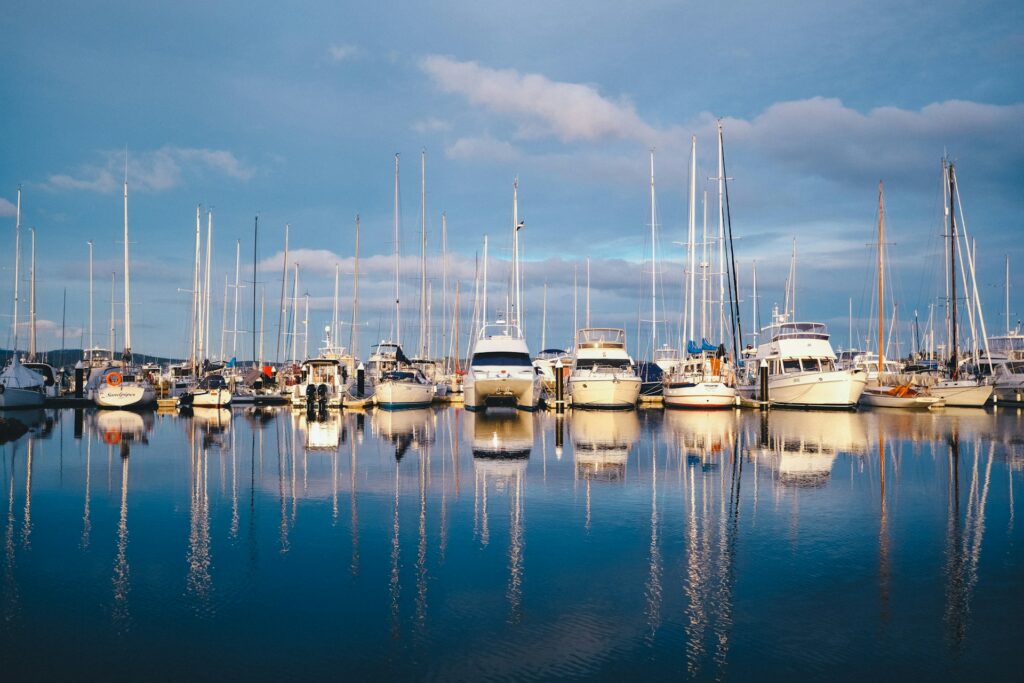Understanding Boat Slip Costs: A Comprehensive Pricing Guide for Boaters in Glen Burnie
Do you dream of exploring the waterways near Glen Burnie, Maryland? Unveiling the mystery of boat slip costs is the first step towards making your aquatic adventures a reality. Prices can vary depending on factors like your boat’s size, desired amenities, and marina location. If you’re feeling overwhelmed by searches like “boat slip cost” or “boat slips near me,” this guide simplifies the process!
We’ll help you navigate Glen Burnie boat slip costs and discover options like the Annapolis Maryland Capital Yacht Club and the Nabbs Creek Marina Yacht Yard. Both offer excellent features and are known for being relatively affordable.
Ready to set sail with confidence? Let’s find the perfect slip that fits your needs and budget.
What Impacts the Cost of Boat Slips?
As you search for boat slips near you, you’ll find that the price of each slip might vary. You might be wondering what impacts the price of a boat slip, so, for your convenience, here are some things that factor into the cost of a boat slip:
The Location of the Marina
If a marina is located in an area in high demand, then it might be more expensive than a marina in an area not in high demand. So, depending on how many boaters travel in and out of a marina, the price will vary.
How Big Your Boat Is
All boats are not the same. If you have a giant boat, it will cost more to leave it at a boat slip than it would if your boat were smaller. Know that the costs will be substantially higher if you have a large boat, and you’ll pay much less if you have a smaller boat.
The Services and Amenities Available at the Boat Slip
Each marina offers unique services and amenities. The more amenities your marina has, the more it will cost to dock your boat there. As you compare and contrast boat slips in the Glen Burnie, Maryland, area, you should keep in mind the services available at each location. We recommend you find marinas with services such as:
- Water
- Electricity
- Maintenance people (like mechanics) on site
- Sanitation services
- Shower access
- Toilet access
- Gym access
- Pool access
- Wi-Fi
- Close restaurants and picnic areas
- and more.
All these services will certainly impact the price of your boat slip, but if these amenities and services are available, you’ll be much more likely to have a good experience docking your boat at the marina. Of course, keep your budget in mind when looking for a marina, but try to find a marina with as many amenities as possible.
What Season It Is
Trying to dock your boat during the busy season will probably cost more than it would during the off-season. For example, if you’re docking a 25-foot boat, it might cost as little as $2500 in the winter and as much as $4000 in the summer. It’s a big saving when you dock in the off-season!
How Early You Buy the Boat Slip
The earlier you buy the boat slip, the better. Many marinas offer early bird discounts to boaters who purchase their boat slips early.
What Should I Expect to Pay for a Boat Slip?
The search for “boat slip costs” and “boat slips for rent near me” can leave you feeling lost in a sea of numbers. Here in Glen Burnie, expect boat slip prices to range widely, typically between $20 and $30 per foot per month. But before you jump in and anchor down on the first available slip, remember: this is just the tip of the iceberg!
Other Fees Added to Boat Slip Cost
Owning a boat is a fantastic way to enjoy the water, but it’s important to understand the ongoing costs involved. While a boat slip is a crucial expense, it’s only one piece of the puzzle. Here are some additional factors to consider when budgeting for your boating lifestyle:
- Boat Maintenance: Boats need regular cleaning and maintenance to stay seaworthy. In addition to the base cost of a boat slip, you might encounter additional fees that will cover any maintenance your boat needs. This can include engine tune-ups, hull cleaning, and potential repairs. Costs will vary depending on your boat’s size, age, and condition.
- Boat Insurance: Just like your car, your boat needs insurance. Premiums are influenced by factors like your boat’s value, usage, and your chosen coverage levels.
- Utility Fees: If your marina finds that it is necessary, they can charge you additional fees to cover utilities such as water, sewage, and electricity.
- Liveaboard Fees: Boaters who live inside their boat will typically have to pay more than boaters who don’t because the costs of living and expenses such as electricity and water add up.
To be clear, this is not an exhaustive list—it is certainly possible that you’ll come across more fees when you go to rent a boat slip, but this is a list of common fees that you should expect as a boat owner.
Should I Pay for a Boat Slip Annually or Monthly?
The price of a boat slip changes based on whether you rent it monthly or purchase it for a whole season. While each marina varies in its pricing model, usually, you will get a slight discount if you purchase a boat slip for a whole season rather than only on a month-to-month basis. If you know that you will use your boat slip for a long time, it might benefit you to purchase the slip for the whole season.
Don’t Let Boat Slip Cost Deter You—Choose Marinas Managed By Trident Marine Group
Trident Marine Group is your perfect docking partner. We prioritize fair pricing and transparent fees at both Annapolis, Maryland Capital Yacht Club and Nabbs Creek. But affordability is just the start. Enjoy exceptional amenities tailored to your preferences, from luxury relaxation to a welcoming community. Our dedicated team offers unwavering support, from answering questions to assisting with maintenance. Contact us today, and let’s set sail on your boating adventure!

